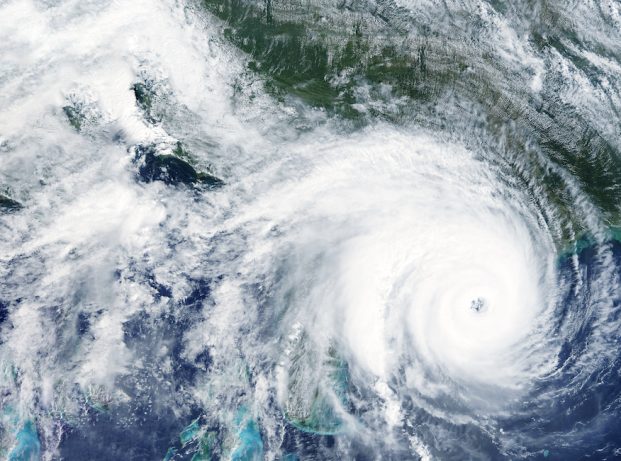
Climate Change & Cannabis Crop Loss: What’s the Link?
New, severe weather patterns have impacted the United States in recent years. Temperature swings and more intense storms are becoming more common, so crops are at risk. Cannabis is no exception from this, and crop loss can impact the whole supply chain. Climate change is the driver of these erratic weather patterns, so how can the industry respond or handle the fluctuations of Mother Nature?
Understanding Climate Change & Cannabis Crop Loss
Changes in weather patterns due to climate change are felt across the country. Swings in the jet stream, changes between La Niña and El Niño, and increasing storm seasons affect every part of the country and every cannabis market.
Each severe weather pattern or storm presents a unique challenge for legal cannabis industries. Just as each state has its regulations to deal with, each has its own type of storm. Changes in California’s rainfall differ from the storms ravaging the Midwest or the wild temperature swings that plague the East Coast.
Wildfires
Swathes of burning land spell bad news for any farmer — but it’s not just the blaze that’s concerning. More common in the West, wildfires have always been a concern during the height of the dry season. But in recent years, burns have become stronger, harder to put out, and longer lasting. Smoke and ash produced by the fire can travel for miles, covering the sun and blanketing outdoor grown plants. A nearby blaze may trigger a power shut-off for indoor-grown plants, which could increase inside temperatures to dangerous levels.
Growers can take precautions by cutting a fire line around the property and keeping dry brush cleared. Some outdoor cultivators favor planting cover crops to provide a barrier, while indoor cultivators feel better with a generator. An irrigation system that can also be used to put out small fires can be helpful.
Hurricanes, Floods, and Tornadoes
Hurricanes, floods, and tornado risk cover a large area of the US. The South and the East Coast are a risk of annual hurricanes making landfall and the flooding that comes with them. Hurricanes have grown stronger in recent years, bringing massive rainfall, powerful winds that can cross 100 miles an hour, and devastating floods. These storms can rip up farms, destroy cultivation centers, and leave a massive wake of devastation.
The West Coast also experiences flood risk during the wet season when the ground simply can’t absorb the massive rainfall that lands within a few days.
The South and the Midwest face an increased risk of severe thunderstorms and tornadoes. Peak tornado season runs from March through May, but out-of-season tornados are becoming increasingly common. Massive winds, torrents of rain, and even hail are a risk. In addition to out-of-season tornadoes becoming more common, the areas where they touch down are increasing. Tornado alley in the Midwest and Dixie Alley in the South are growing, putting more people and businesses at risk.
Drought
In addition to the floods, fires, and earthquakes, the West also faces a water crisis. Droughts are becoming longer and more severe in between rainfalls, presenting a challenge for cannabis businesses that need to keep plants hydrated. Water usage, which is always a question, becomes a luxury during droughts, and businesses can’t afford to waste a drop.
Having multiple sources of water becomes essential for businesses to ration their supply. Collecting rainwater or having your own well can help lessen the challenge, but these supplies could run dry. Having suitable systems in place to monitor and manage water use is crucial.
Cultivators Face the Most Impact
Cannabis crop loss prevention is a critical concern in today’s changing climate. While the scarcity of cannabis plants poses a significant threat to the entire supply chain, it’s the cultivators who bear the brunt of climate change’s direct impact. They face the daunting challenge of safeguarding their precious crops. While a processing facility or a packaging company might endure a day or two without power and continue operations, any disruption in the cultivation process can spell disaster for these dedicated cultivators. Whether it’s a tornado wreaking havoc in their fields or a fire engulfing their cultivation facility, such unfortunate events can translate into the loss of months’ worth of hard-earned profits and painstaking effort.
Though it is not all on cultivators to deal with these changes in weather patterns, they must be among the first to respond and plan. This responsibility means conducting risk assessments based on your location, keeping an eye on the weather, and always having a contingency plan.
If you’re in an area affected by drought:
- Can you collect rainwater or create a stock pond?
- How can you ration and re-use water, so you don’t waste a drop?
- Are new technologies coming online that allow you to monitor and measure water usage more accurately?
Understanding your exposures is the first step to covering them. If you’re in an area affected by hurricanes or tornadoes, do you have a backup generator, so your power doesn’t go off entirely? If you live in areas where wildfires are common, do you have barrier plants or a burn line established?





